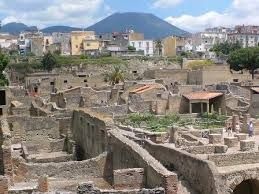
Herculaneum
Herculaneum was an antiquated Roman town devastated by volcanic pyroclastic streams in 79 AD. Its remnants are spotted in the collective of Ercolano, Campania, Italy. It is most celebrated for having been lost, alongside Pompeii, Stabiae, Oplontis and the area of Boscoreale, in the ejection of Mt. Vesuvius in the year 79 AD, which covered it in superheated material. It is additionally well known as one of the aged urban areas that can be visited in practically its unique wonder; not at all like Pompeii, it was for the most part influenced by pyroclastic streams, subsequently safeguarding the wooden protests, for example, top tops, building pillars, couches, entryways, and even nourishment.
After prior undercover burrowing, significant uncovering started at advanced Ercolano in 1738 by Spanish engineer Rocque Joaquin de Alcubierre. The extravagant distribution of Le Antichita di Ercolano under the support of the King of the Two Sicilies had an impact on beginning European Neoclassicism out of all extent to its constrained flow. In the later eighteenth century, themes from Herculaneum started to show up on slick decorations, from ornamental divider works of art and tripod tables to aroma burners and teacups. Notwithstanding, uncovering stopped once the adjacent town of Pompeii was found, which was fundamentally less demanding to exhume due to the more slender layer of flotsam and jetsam covering the site. In the twentieth century, removal by and by continued in the town. Nevertheless, numerous open and private structures, including the discussion complex, are yet to be unearthed.



